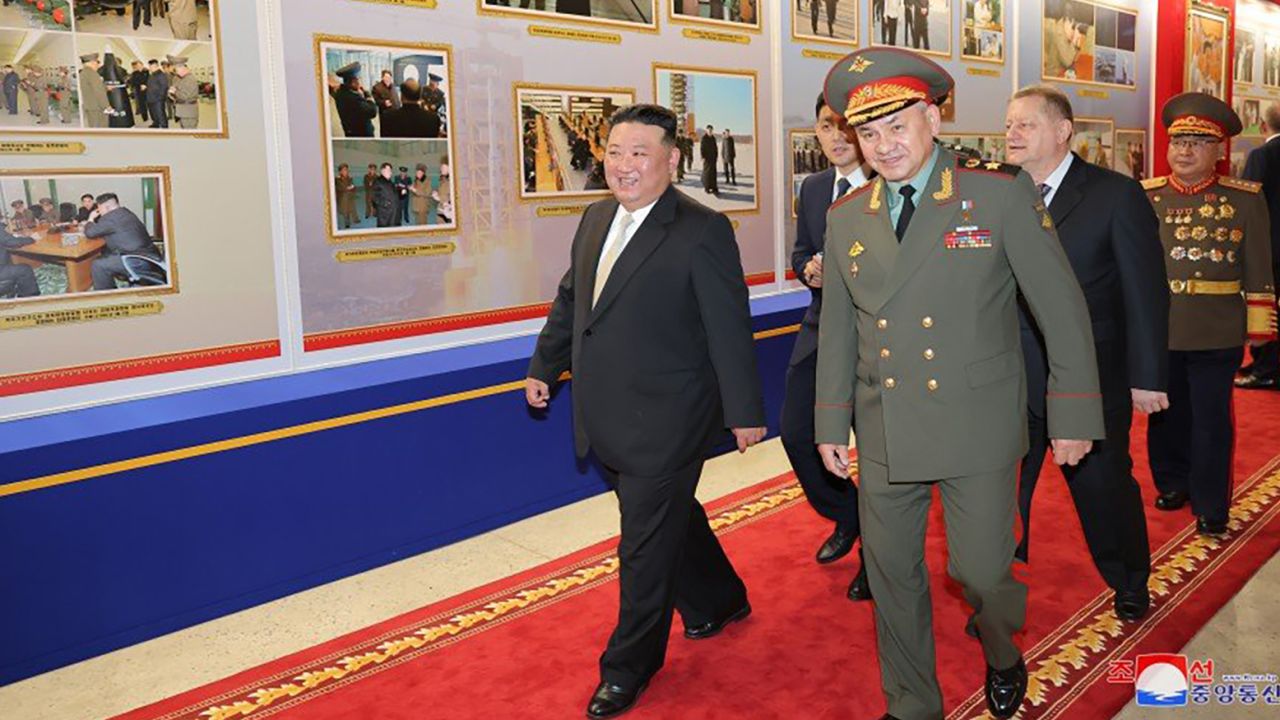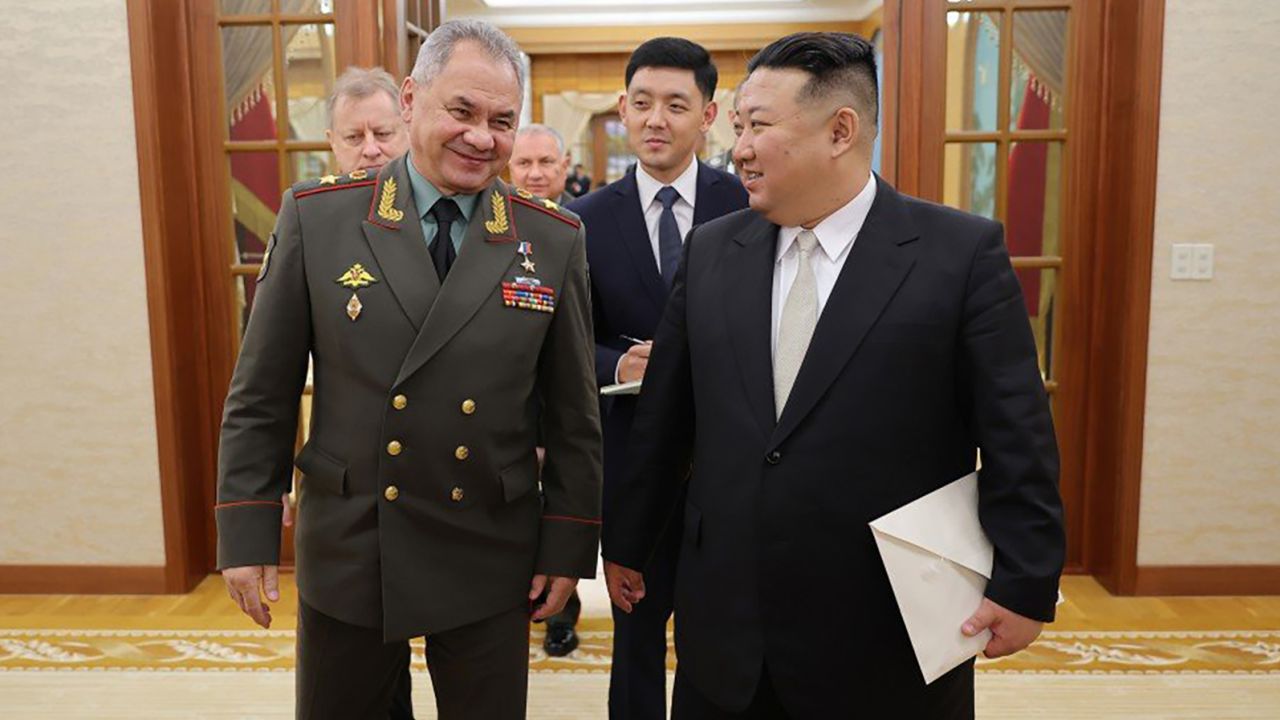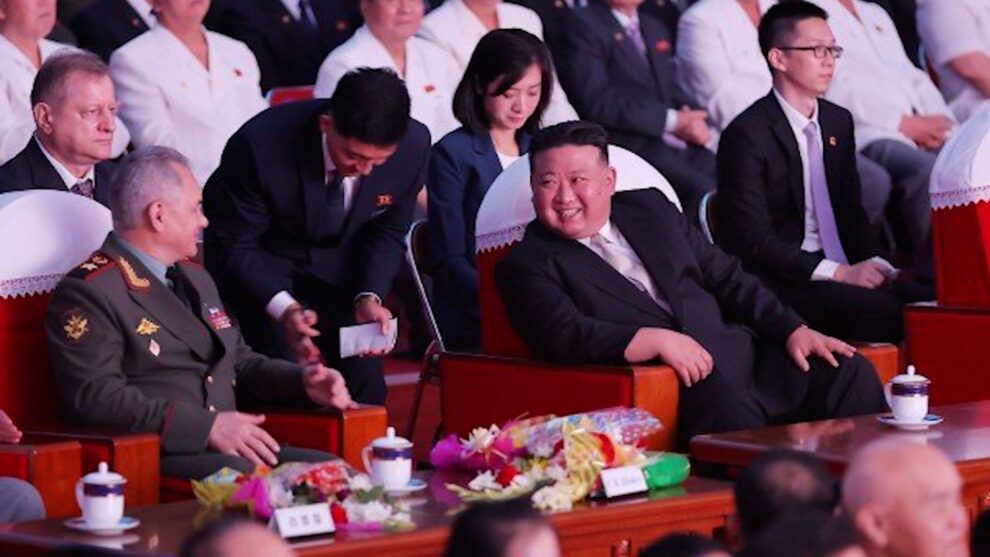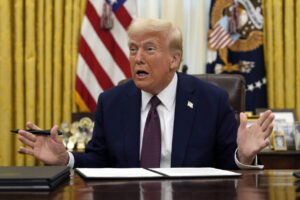Delegations from Russia and China, North Korea’s key allies in the Korean War, gathered in Pyongyang this week to celebrate North Korea’s “Victory Day” in the war that ravaged the Korean Peninsula seven decades ago as they align over another very contemporary conflict – Russia’s devastating invasion of Ukraine.
North Korean leader Kim Jong Un gave Russian Defense Minister Sergei Shoigu – an architect of Moscow’s assault on Ukraine – a tour of a defense exposition in Pyongyang on Wednesday, with images from North Korean media showing them walking past an array of weaponry, from Pyongyang’s nuclear-capable ballistic missiles to its newest drones.
At a state reception for Shoigu and the Russian delegation, in a reference to the war in Ukraine, North Korean Defense Minister Kang Sun Nam expressed Pyongyang’s full support “for the just struggle of the Russian army and people to defend the sovereignty and security of the country,” according to a report from the state-run Korean Central News Agency (KCNA).
In remarks of his own, Shoigu then said the Korean People’s Army (KPA) has “become the strongest army in the world” and pledged continued cooperation to keep it that way.
Also Wednesday, at a reception for the Chinese delegation led by Politburo member Li Hongzhong, senior North Korean official Kim Song Nam thanked Chinese forces for joining in the Korean War, saying North Korea “would not forget forever the heroic feats and merits of the bravery soldiers who recorded a brilliant page in the history.”
Ankit Panda, Stanton senior fellow in the Nuclear Policy Program at the Carnegie Endowment for International Peace said the presence of the Chinese and Russian delegations at the armistice anniversary “underscores the importance Pyongyang attaches to its relationships with both countries.”
“Shoigu’s presence is particularly notable: a sign of just how close Pyongyang and Moscow have become since Russia’s invasion of Ukraine last year,” Panda said.
But the gathering in Pyongyang illustrates a weakness too, said Blake Herzinger, a research fellow at the United States Studies Center in Australia.
“It’s really representative of how short both China and Russia’s lists of friends are, and the willingness of both to show support for a rogue regime,” Herzinger said.

North Korean leader Kim Jong Un meets with Russian Defense Minister Sergei Shoigu and his delegation, North Korean state media KCNA reported on July 26, 2023.KCNA
Korean War
Thursday is the 70th anniversary of the end of the 1950-1953 Korean War, one of the first international conflicts of the Cold War era.
In the fall of 1950, China sent a quarter million troops into the Korean Peninsula, supporting its North Korean ally and pushing back the combined forces of South Korea, the United States and other countries under the United Nations Command.
More than 180,000 Chinese troops died in the Korean War, or what Beijing calls the War to Resist US Aggression and Aid Korea.
Russia’s predecessor, the Soviet Union, also supported North Korea during the war, with combat support like Soviet aircraft engaging US jets and with supplies of heavy weaponry like tanks.
Despite Pyongyang’s claims of a victory, the war it launched in 1950 ended in a stalemate, with the current demilitarized zone along the 38th parallel in much the same location as it was before the war.
The Korean War armistice was signed on July 27, 1953, ending hostilities although a true peace deal has never been signed.
After the war, the US, which anchored the UN Command that supported South Korea, kept a large contingent of troops in the South at a range of Army and air bases. The US’ Camp Humphreys in Pyeongtaek, south of Seoul, is the largest overseas US military base.
Meanwhile, Moscow over the decades has been a staunch ally for North Korea, especially as the two share a joint animosity toward the West. The same can be said for the Chinese Communist Party, especially under China’s current leader Xi Jinping.
Panda noted how both Moscow and Beijing, permanent members of the UN Security Council, have defended Pyongyang’s interests before the world body as Western powers led by the US have tried to put further sanctions on North Korea.

North Korean leader Kim Jong Un with Russian Defense Minister Sergei Shoigu in Pyongyang on July 26, 2023.KCNA
Ukraine alignment
Now the three authoritarian nuclear powers are putting up a united front over Ukraine, a former Soviet state which Russia invaded in February 2022 after Russian President Vladimir Putin declared it was historically Russian territory.
That invasion soon stumbled as Ukrainians put up a fierce defense of their homeland and as Western powers scrambled to send weapons and ammunition to Kyiv while Moscow burned through its own stocks and looked to allies like Iran and North Korea to resupply.
US officials said last year that North Korea was selling millions of rockets and artillery shells to Russia for use on the battlefield in Ukraine.
And while China has not supplied Russia with weaponry, it has remained steadfastly in Moscow’s corner as the war in Ukraine drags into its 18th month, with Xi deepening his relationship with Putin and echoing the Kremlin’s rhetoric over the conflict.
After the brief mutiny in Russia by the Wagner mercenary group last month, a Chinese Foreign Ministry spokesperson expressed support for the Putin regime.
“As Russia’s friendly neighbor and comprehensive strategic partner of coordination for the new era, China supports Russia in maintaining national stability and achieving development and prosperity,” an online statement said.
Military drills
Meanwhile, the Russian and Chinese militaries have been active in the waters off the Korean Peninsula, with their latest joint exercise, Northern/Interaction-2023, bringing together naval and air forces from both countries in drills aiming to “strengthen both sides’ capabilities of jointly safeguarding regional peace and stability and responding to various security challenges,” according to the People’s Liberation Army’s English website.
Those exercises in the waters between the Korean Peninsula and Japan occurred as South Korea and the US were conducting military displays of their own, including a US Navy nuclear-capable ballistic missile submarine making a port call in South Korea for the first time in four decades.
Pyongyang’s armistice commemorations were expected to continue Thursday with a military parade in the capital. North Korea typically marks key moments in its history with displays of its newest weaponry.
One such weapon that may be on display is the Hwasong-18 ICBM, a solid-fueled, nuclear-capable missile that North Korea claims could hit anywhere in the United States. It has tested that missile twice this year, most recently earlier this month.
Source : CNN World










